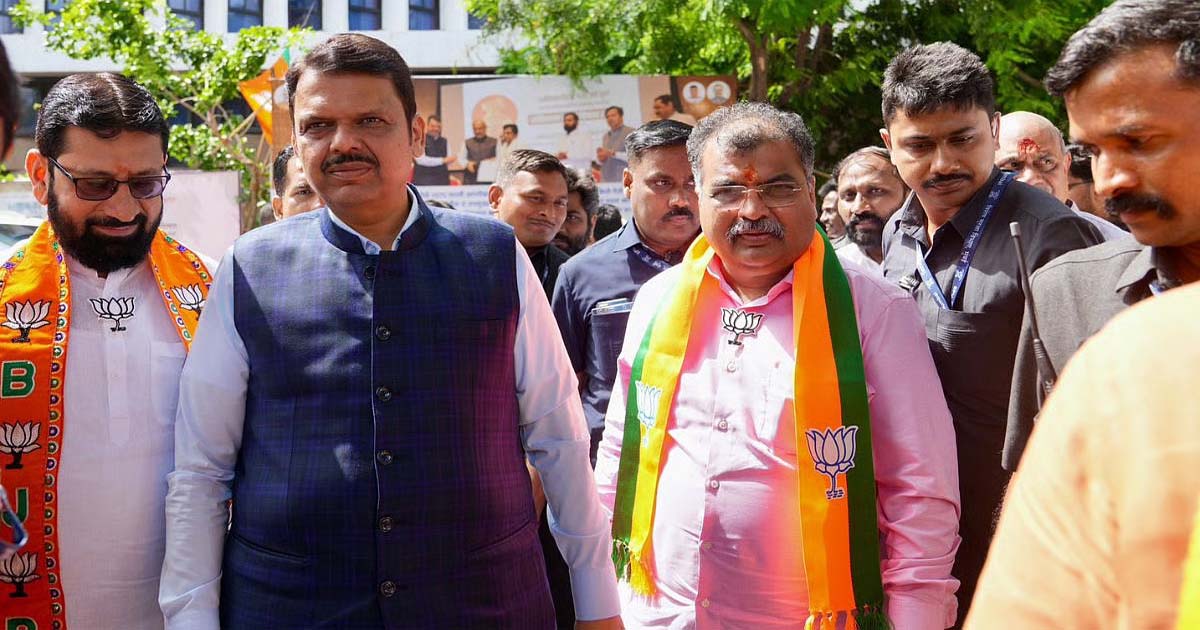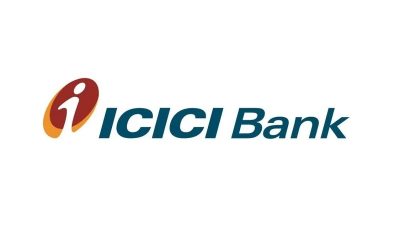Business
Modi 3.0 Budget 2024: From ₹401 Crores In 1952-53 To ₹47,65,768 Crores In 2024-25, The Budget Expenditure Journey Of India

As the nation eagerly awaits with several expectations, the Union Finance Minister Nirmala Sitharaman will present the Budget 2024 on July 23 (Tuesday) in Lok Sabha. Ahead of the Budget presentation, Sitharaman today, July 22, tabled the Economic Survey 2023-2024 in the parliament as the session kicked off.
This budget will also set a record for Sitharaman by marking her presentation of the highest number of budget in the parliament, that is, a total of seven in a row.
The markets, investors and various sectors across will keenly watch the budget and the allocations.
With several expectation across various sectors, OMRON Healthcare India, Managing Director, Tetsuya Yamada, added, “India’s healthcare system faces a significant challenge due to the increasing burden of non-communicable diseases (NCDs). India has more than 220 million people who suffer from high blood pressure, but a WHO study showed that only 15% of them receive treatment.”
“We hope that the government will keep in mind the importance of implementing policies and promoting widespread knowledge of preventive care, which can reduce the burden of costs for hospitalization and surgery,” he added.
Furthermore, he noted, “We anticipate that the Union Budget 2024-25 will reflect a forward-thinking approach including preventive care at home, aligning with industry needs, and ultimately establishing a resilient and advanced healthcare framework.”
Here is the breakdown of the budget expenditure since independence:
The Early Years- 1952-1960
In the early period of post-independence, the country’s budget expenditure was relatively the lowest compared to the recent. It stood at Rs 401 crores in 1952-53 and by the 1959-60 period, the expenditure doubled to Rs 839 crores.
The 1960s: Laying the Foundations
Continuing the upward trend, the budget expenditure reached Rs 980 crores in 1960-61 with many significant allocations in various sectors such as agriculture, industry, and defence.
Furthermore, it crossed the Rs 1,000 crore mark for the first time in 1961-62 at Rs 1,024 crores and the decade ended with the budget at Rs 3,388 crores in 1969-70.
The 1970 period
Although facing with many economic challenges during the 1970s period, including the inflation and global oil crises, the budget expenditure rose from Rs 3,781 crores in 1970-71 to Rs 12,048 crores in 1979-80.
The 1980s: Economic Liberalisation Begins
Reflecting a shift towards modernisation and industrial growth trend, in 1980-81 it reached Rs 13,310 crores and later then crossed the Rs 1 lakh crore mark in 1985-86 at Rs 1,03,844 crores.
By the end of the decade, the expenditure had reached Rs 82,161 crores in 1989-90.
The 1990s: Liberalisation and Expansion
The economic liberalisation period, the 1990s was a watershed moment for India, and the budget expenditure increased from Rs 1,13,422 crores in 1991-92 to Rs 2,83,882 crores in 1999-2000.
The 2000s: Growth and Global Integration
The new millennium with the continued upward trajectory, the budget expenditure stood at Rs 3,38,487 crores in 2000-01 and crosed the Rs 1 lakh crore mark several times over by 2009-10, reaching Rs 10,20,838 crores.
The 2010s – Digital Revolution and Social Welfare
The digital revolution era, the budget expenditure in 2010-11 was Rs 11,08,749 crores. By 2019-20, the expenditure had surged to Rs 27,86,349 crores.
The 2020s: Resilience Amidst Challenges
The 2020s period began with unprecedented challenges due to the COVID-19 pandemic but despite this, the budget grew from Rs 30,42,230 crores in 2020-21 to Rs 47,65,768 crores in 2024-25.
National
Ravindra Chavan, Trusted Lieutenant Of Maharashtra CM Devendra Fadnavis, Appointed BJP State Unit President

Mumbai: Ravindra Chavan, known as a trusted lieutenant of Maharashtra Chief Minister Devendra Fadnavis, will take over as BJP’s state unit president on Tuesday.
The incumbent, Revenue Minister Chandrashekhar Bawankule, will hand over charge at a party conclave in Mumbai. The mantle is being handed to Chavan, whose grassroots planning ensured BJP’s impressive electoral performance in Thane and the Konkan belt, with an eye on the coming elections to the local bodies, according to party sources.
Chavan was the only candidate who filed his nomination papers on Monday at BJP state headquarters in the presence of Fadnavis, Bawankule and the party’s Maharashtra in-charge Arun Singh. Union minister Kiren Rijiju was present as the central observer.
Chavan represents Dombivali for the fourth term in the Assembly. He was a member of the Fadnavis cabinet between 2014 and 2019 and the Eknath Shinde-led government from 2022 to 2024. There was speculation of his elevation to the key party post started when he was denied a Cabinet berth after last year’s Assembly elections. He has been officiating as the working president of the state unit for the last few months.
The BJP is eyeing maximum number of municipal bodies in the Mumbai Metropolitan Region (MMR) comprising 8 municipal corporations. With the elevation of Chavan, known for his aggressive politics, BJP seems to be sending out a message to deputy CM Eknath Shinde-led Shiv Sena, which is likely to ask for lion’s share of seats for the civic polls. As an experienced leader, Chavan will shoulder his responsibilities with vigour and strength, Fadnavis asserted.
National
Hyderabad Chemical Factory Blast: Death Toll Rises To 32 After 15 Succumb Overnight

Hyderabad: The death toll in the explosion in a pharmaceutical unit at Pashamylaram near Hyderabad rose sharply to 32 on Tuesday, with about 15 injured succumbing at hospitals overnight.
The death toll in the worst industrial disaster in Telangana may go up further as the rescue workers continued searching for the bodies in the debris of a three-storey building, which collapsed under the impact of the blast.
A massive explosion had rocked Sigachi Industries Limited’s pharmaceutical factory at Pashamylaram industrial area in Sangareddy district, about 50 km from Hyderabad, on Monday morning.
The explosion in the Microcrystalline Cellulose (MCC) drying unit also left 35 workers injured. The condition of 11 of them is stated to be critical.
According to officials, 27 workers were still missing. They were feared trapped under the debris.
Personnel of the State Disaster Response Force (SDRF), Hyderabad Disaster Response and Asset Protection Agency (HYDRAA), Revenue and police continued clearing debris.
The majority of the victims were migrant workers from states like Bihar, Uttar Pradesh and Odisha.
As many as 108 workers were at the factory at the time of the blast, which could be heard about five km away. The explosion triggered a huge fire, and 15 fire engines were used to douse the flames.
According to eye-witnesses, such was the impact of the explosion that workers were tossed in the air and fell several meters away.
As the bodies of some victims were blown to pieces or charred beyond recognition, the authorities were conducting DNA tests to establish their identity.
Chief Minister A. Revanth Reddy will be visiting the accident site on Tuesday. He will also call on the injured at a government hospital.
Health Minister Damodar Raja Narasimha told media persons at the spot on Monday that the cause of the explosion was not yet known. The company, which is 40-45 years old, manufactures Microcrystalline Cellulose, he said.
Labour Minister G. Vivek said prima facie it was not a reactor blast. Some problem in the air dryer system is believed to have resulted in the explosion and fire.
The state government appointed a high-powered committee to probe the disaster and its underlying causes.
The committer comprises the Chief Secretary, Special Chief Secretary (Disaster Management), Principal Secretary (Labour), Principal Secretary (Health) and Additional DGP (Fire Services).
According to the Chief Minister’s Office, the panel would also make recommendations to prevent the recurrence of such accidents.
National
Maha govt tables bill to set up Gadchiroli district mining authority

Mumbai, June 30: The Maharashtra government on Monday tabled the bill for the establishment of the 16-member Gadchiroli District Mining Authority for the coordination and supervision of orderly and rapid development of the mineral-bearing area and execution of plans and projects.
The authority will be headed by Chief Minister Devendra Fadnavis, who is also the Gadchiroli district guardian minister. The government’s move is important as it hopes to finish the Left Wing Extremism (LWE) and develop Gadchiroli as the next steel city of India.
The district is endowed with abundant minerals such as iron ore, hematite, magnetite, BHQ, limestone, Dolomites and coal, which are used as raw materials for various manufacturing industries.
Further, Gadchiroli district, which is rich in iron ore, has the potential to be developed as a hub for mineral-based industries, especially the steel industry, said the bill.
“Currently, the absence of an integrated administrative mechanism hampers the swift execution of the mining project. Hence a need was felt for the establishment of a unified authority comprising of certain ministers and secretaries of the relevant departments under the chairmanship of the Chief Minister to expedite mining approvals and foster the growth of mineral based industries such as steel and cement, thereby accelerating the holistic development of the Gadchiroli district and consequently of the state,” said the bill.
It pointed out that the authority will act as a catalyst in speeding up the process of operationalisation of approved mining leases, and will also generate employment in the district and boost the revenue of the state.
According to the bill, the Mines and Minerals (Development and Regulation) Act, 1957, and rules framed thereunder govern the development and regulation of mines and minerals. The major mineral blocks are auctioned following the Mineral (Auction) Rules, 2015. The mining concession holder is required to obtain various clearances and no-objection certificates from various departments and district officers of the government and local authorities within the timelines prescribed in the rules.
If the bidder fails to meet the prescribed timeline, the alloyed major mineral blocks will have to be auctioned again.
The Chief Minister last week at the industry conference said, “Gadchiroli 10 years ago was zero industrial area, nobody thought that it would become an Industrial magnet. Due to a slew of policies, Gadchiroli is becoming a new steel city of India to produce one-third of India’s steel that will change the entire outlook of the district.”
-

 Crime3 years ago
Crime3 years agoClass 10 student jumps to death in Jaipur
-

 Maharashtra9 months ago
Maharashtra9 months agoMumbai Local Train Update: Central Railway’s New Timetable Comes Into Effect; Check Full List Of Revised Timings & Stations
-

 Maharashtra9 months ago
Maharashtra9 months agoMumbai To Go Toll-Free Tonight! Maharashtra Govt Announces Complete Toll Waiver For Light Motor Vehicles At All 5 Entry Points Of City
-

 Maharashtra9 months ago
Maharashtra9 months agoFalse photo of Imtiaz Jaleel’s rally, exposing the fooling conspiracy
-

 Crime9 months ago
Crime9 months agoBaba Siddique Murder: Mumbai Police Unable To Get Lawrence Bishnoi Custody Due To Home Ministry Order, Says Report
-

 National News9 months ago
National News9 months agoMinistry of Railways rolls out Special Drive 4.0 with focus on digitisation, cleanliness, inclusiveness and grievance redressal
-

 Maharashtra8 months ago
Maharashtra8 months agoMaharashtra Elections 2024: Mumbai Metro & BEST Services Extended Till Midnight On Voting Day
-

 National News9 months ago
National News9 months agoJ&K: 4 Jawans Killed, 28 Injured After Bus Carrying BSF Personnel For Poll Duty Falls Into Gorge In Budgam; Terrifying Visuals Surface














